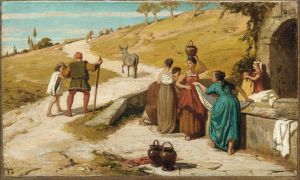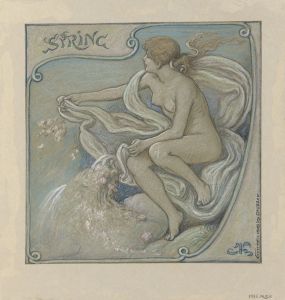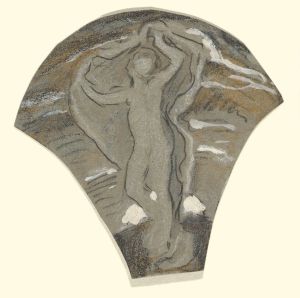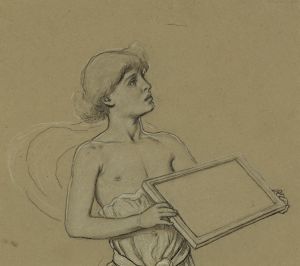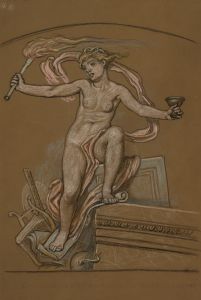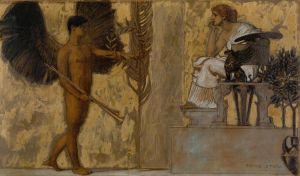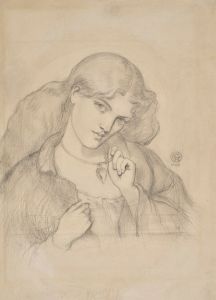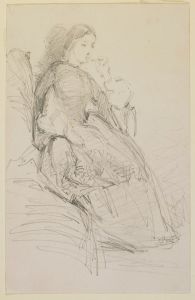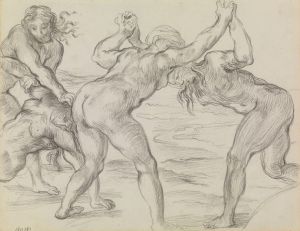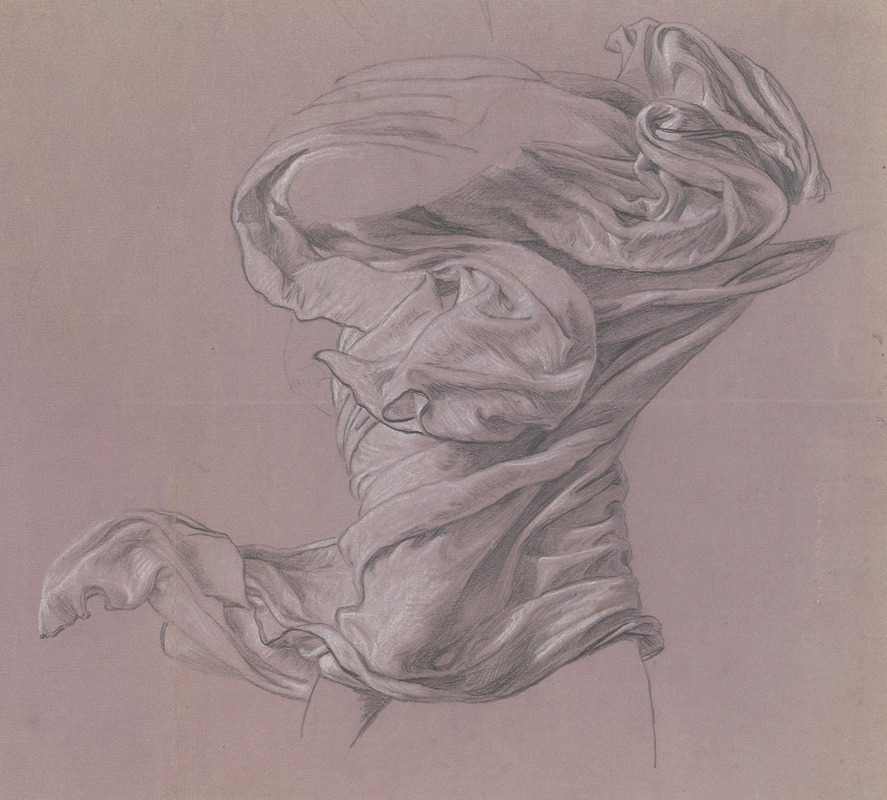
Study for ‘Greek Girls Bathing’ XVII
A hand-painted replica of Elihu Vedder’s masterpiece Study for ‘Greek Girls Bathing’ XVII, meticulously crafted by professional artists to capture the true essence of the original. Each piece is created with museum-quality canvas and rare mineral pigments, carefully painted by experienced artists with delicate brushstrokes and rich, layered colors to perfectly recreate the texture of the original artwork. Unlike machine-printed reproductions, this hand-painted version brings the painting to life, infused with the artist’s emotions and skill in every stroke. Whether for personal collection or home decoration, it instantly elevates the artistic atmosphere of any space.
Elihu Vedder was an American symbolist painter, born on February 26, 1836, in New York City. He is known for his allegorical and mythological subjects, often infused with a sense of mysticism and symbolism. Vedder spent a significant portion of his life in Italy, where he was influenced by the classical art and culture that surrounded him. His works often reflect a blend of American and European artistic traditions.
"Study for ‘Greek Girls Bathing’ XVII" is one of Vedder's many studies and sketches that explore classical themes. While specific details about this particular study are limited, it is part of a broader series of works where Vedder delved into the depiction of ancient Greek life and mythology. These studies typically feature figures in classical poses, often set against idyllic landscapes that evoke the ancient world.
Vedder's interest in Greek themes can be attributed to the broader 19th-century fascination with classical antiquity, which was prevalent among artists of the time. This interest was part of the Neoclassical movement, which sought to revive the art and culture of ancient Greece and Rome. Artists like Vedder were drawn to the idealized forms and harmonious compositions that characterized classical art.
In his studies of Greek subjects, Vedder often focused on the human figure, exploring the beauty and grace of the human form as seen through the lens of classical ideals. His works are characterized by a meticulous attention to detail and a deep understanding of anatomy, which he used to create lifelike and dynamic figures.
"Study for ‘Greek Girls Bathing’ XVII" likely depicts a scene of young women engaged in the act of bathing, a common motif in classical art that symbolizes purity, beauty, and the connection between humans and nature. Such scenes were popular in ancient Greek art and were often used to convey themes of innocence and the pastoral ideal.
Vedder's studies were not merely exercises in technique; they were also explorations of mood and atmosphere. He often used light and shadow to create a sense of depth and to highlight the contours of the human body. His use of color was typically restrained, focusing on earth tones and muted hues that complemented the serene and timeless quality of his subjects.
Throughout his career, Vedder's work was well-received, and he became known for his ability to blend realism with symbolism. His studies, including those of Greek themes, contributed to his reputation as a master of allegorical and mythological painting.
While "Study for ‘Greek Girls Bathing’ XVII" may not be as widely recognized as some of Vedder's other works, it represents an important aspect of his artistic exploration and his contribution to the 19th-century revival of classical themes in art. Vedder's legacy continues to be appreciated for its unique blend of American and European influences and its deep engagement with the art and culture of the past.







